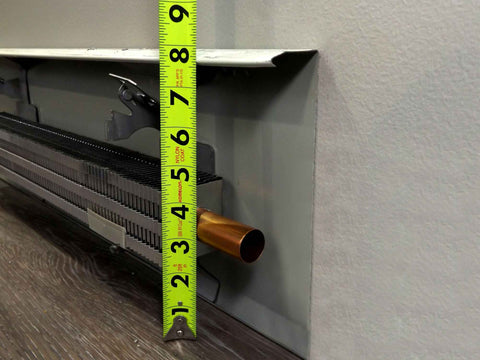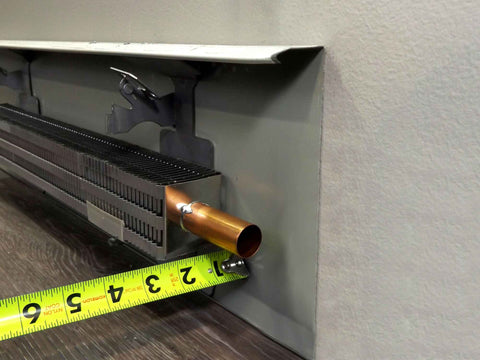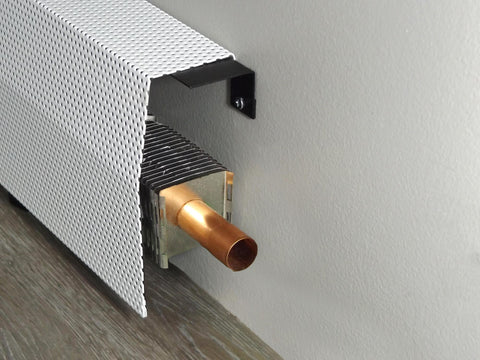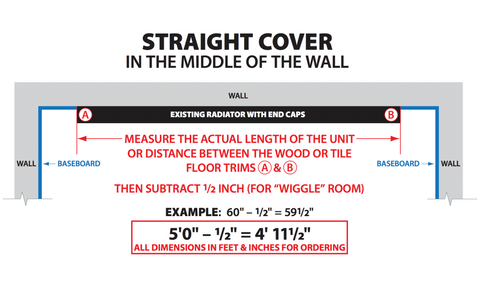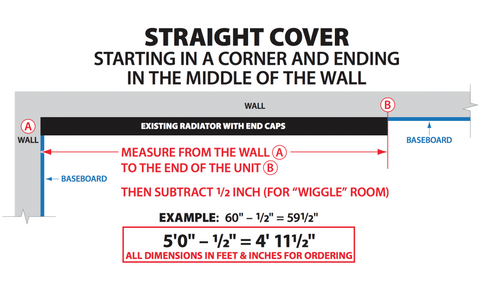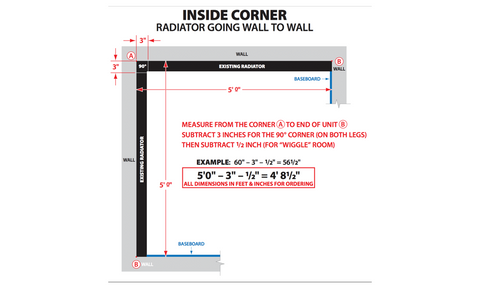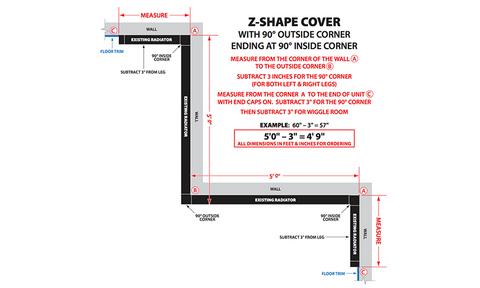If you’re remodeling your home or upgrading your heating system, you may need to consider getting new baseboard heater covers. These covers are more than a decorative element—they protect your heating system, ensure safety, and enhance your home’s aesthetic.
When making a decision, should you choose metal or wood baseboard covers? This guide will walk you through the differences, benefits, and drawbacks, helping you make a choice that perfectly fits your home and lifestyle.
Understanding Baseboard Heaters
A baseboard heater is a popular heating solution commonly installed along the base of a wall. These heaters rely on convection, using heating elements to warm the air, which then rises to heat your space efficiently. Baseboard heaters often blend into a room’s interior but are prone to wear and tear over time, making them a candidate for upgrades or cover replacements.
What Are Baseboard Heater Covers?
Baseboard heater covers are protective enclosures that surround the heating elements. They serve multiple purposes, including:
-
• Protective barrier: They shield the heater’s electrical elements from potential damage, ensuring the system functions efficiently. Additionally, they help minimize the risk of injury by creating a barrier around these components.
-
• Heat optimization: Well-designed covers allow for evenly distributed heat throughout the room. Allowing heat to spread efficiently helps create a comfortable and consistent indoor temperature.
-
• Aesthetic improvement: Heater covers are a great way to conceal the heaters, instantly improving the look of your space. They hide imperfections and enhance your home’s interior design for a more polished and cohesive appearance.
While most heaters come with standard metal covers, homeowners can replace them with upgraded designs that are available in metal and wood options.
Metal Baseboard Heater Covers
Metal baseboard heater covers are widely regarded for their durability and functionality. They are often made from high-quality metals, such as galvanized steel or aluminum, and may feature protective coatings like epoxy to prevent rust and damage.
The Benefits of Metal Baseboard Heater Covers
Metal baseboard heater covers offer several advantages, making them popular among homeowners. Their robust construction and sleek designs ensure longevity and aesthetic appeal, making them a practical and stylish upgrade.
Enhanced Durability
Metal covers, like those from EZ Snap Covers, are built to last. They resist cracking and warping and wear better than alternative materials. Metal is an excellent choice if you want a low-hassle, long-term solution.
Improved Heat Efficiency
Metal conducts heat efficiently. This allows your heater to warm your space faster and more evenly. This is particularly beneficial in colder climates where maximizing heat output is critical.
Modern and Sleek Design
Metal covers fit seamlessly with modern interior designs. Their sleek look can give rooms a contemporary feel, and with various finishes available—like semi-gloss white or urban steel—it’s easy to find an option that matches your decor.
Rust and Corrosion Resistance
High-quality metal covers are often rustproof and corrosion resistant. This is particularly important in humid environments like bathrooms or basements, ensuring your covers stay in pristine condition.
Low Maintenance
Metal covers require minimal maintenance effort. A quick wipe-down is generally all it takes to keep them looking like new.
Wood Baseboard Heater Covers
Wood baseboard heater covers are a more traditional choice, offering a natural and timeless aesthetic. These covers are crafted from various wood types and finished to suit your design preferences.
The Benefits of Wood Baseboard Heater Covers
Wood baseboard heater covers combine function with classic design. Their unique characteristics make them an excellent choice for homeowners seeking a warm and inviting touch in their homes.
Durability and Longevity
Wood covers are impressively durable, often lasting for years without showing visible wear. Their sturdy construction minimizes damage caused by regular use, ensuring reliability.
Aesthetic Appeal
Wooden covers add warmth and sophistication to your space. Different wood types and finishes are available, such as oak or maple in natural or stained hues, and they can be customized to seamlessly complement your interior design.
Improved Safety
Wood covers provide an effective barrier against the heating element, reducing the risk of burns or injuries. This makes them safer for heaters in high-traffic areas.
Efficient Heat Distribution
Many wood covers are thoughtfully designed to enhance air circulation. This helps evenly spread heat throughout your room to maintain a comfortable environment.
Which Is Right for You?
Now that we’ve outlined the benefits of metal and wood covers, how do you decide which is the better option for your home?
Metal baseboard heater covers are best for modern homes, efficiency-focused users, and humid environments. They are durable, rust-resistant, low maintenance, and come in many modern design options. However, there are fewer customizable finishes compared to wood.
Wood baseboard heater covers are ideal for homeowners seeking a traditional or warm aesthetic and for safety-conscious households. These covers come in many beautiful finishes, are customizable, and provide added safety. Although, they do require more maintenance and may warp in humid environments.
Here are a few other key factors to consider:
-
• Home style: Metal is ideal for contemporary spaces, while wood complements traditional or rustic aesthetics.
-
• Budget: High-quality products exist in both materials. Metal covers tend to have a longer lifespan, which could be more cost-effective in the long run.
-
• Environment: If you live in a humid area, rust-resistant metal covers may be better.
-
• Personal preferences: Visual appeal and how the covers blend into your existing decor are vital factors to take into account.
How EZ Snap Covers Make It Easy
If you’re interested in metal options, EZ Snap Covers makes it a breeze to upgrade your space. Our galvanized steel replacement baseboard covers with epoxy coatings ensure durability, heat efficiency, and sleek design. Plus, they’re simple to install—just measure, order, and snap them on!
Here are a few more reasons to consider EZ Snap Covers:
-
• Customizable lengths: Need covers longer than seven feet? Order custom sections joined with inconspicuous couplers.
-
• Rust-free guarantee: A lifetime guarantee against rust means your covers can last a lifetime.
-
• Child-safe design: Small holes prevent fingers from touching sharp fins or hot components.
-
• Easy installation: Most units take little time to install, making the process stress-free.
Whether you’re replacing old covers or giving your heaters a fresh, modern look, EZ Snap Covers provides durable, stylish solutions.
Upgrade Your Covers Today
Choosing between metal or wood baseboard heater covers makes a significant difference in your heating system’s appearance and functionality. Evaluate your needs, consider your home’s style, and choose a material that balances durability, design, and practicality.
